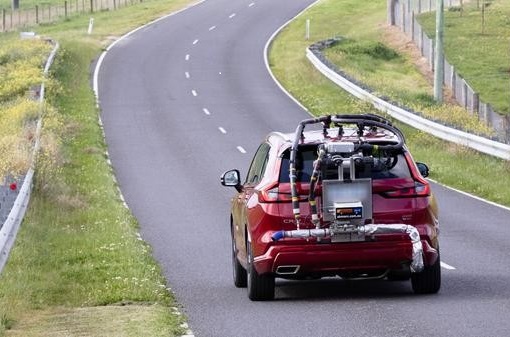New tests reveal the new cars using more fuel than advertised
New data from the peak motoring body’s Real-World Testing Program identifies new cars consuming more than 30% more fuel than advertised, highlighting the benefit of providing information that will help Australian families and fleets properly manage vehicle running costs and environmental performance.

Funded by the Commonwealth Government and launched in October 2023 by Prime Minister Anthony Albanese, the AAA’s Real-World Program has now released results for 70 of Australia’s most popular cars, with 52 found to be using more fuel than reported from lab testing, and 17 emitting more noxious emissions than allowed under current laboratory test limits.
Both sides of politics committed to supporting the AAA Program at the 2022 election in response to the 2015 Volkswagen scandal and subsequent studies suggesting increasingly stringent emissions standards might be incentivising global car makers to prioritise cars’ lab tests results over their on-road performance.
The latest results from the AAA Program show:
- Two of the 12 vehicles tested consumed 32 per cent more fuel in real-world conditions than in the mandatory laboratory test results reported on windshield stickers.
- Eight others consumed between 5% and 21% more fuel than their lab test results.
- Three vehicles tested in real-world conditions produced noxious emissions above current or pending Australian laboratory limits, despite having performed within those limits in their mandated lab tests.
The full list of test results from this tranche of testing and from all 70 vehicles tested so far is available at realworld.org.au
The Real-World Testing program is a global first. It was created by the AAA to help the 9.3 million members of its affiliated motoring clubs drive down their motoring costs and access better information to guide their shift into cleaner cars.
The program has just been awarded the Federation Internationale de l’Automobile’s 2024 Empowering Cleaner Choice innovation award for providing users with “unprecedented information enabling them to make more informed choices, save money and better protect the planet’’.
AAA Managing Director Michael Bradley said the Program had established that laboratory tests on fuel consumption and emissions are not a good reflection of real-world performance.
“Without real-world testing results, consumers and fleet buyers could find themselves buying a vehicle that is dirtier and has higher running costs than they might have expected,’’ Mr Bradley said.
While testing to this point has focused on cars with internal combustion engines (including hybrids), protocols are being developed to start testing electric vehicles next year.
Under Real-World Testing, cars are tested on roads in and around Geelong, Victoria under strict test protocols to ensure fuel consumption and emissions results are repeatable and to minimise the influence of human factors such as driving style and changing traffic flows. For research purposes, the AAA undertook 23 tests on the Program’s reference vehicle (a Toyota RAV4), with fuel consumption across these tests having less than 2.5 per cent variability.
For more information on the full testing program, see realworld.org.au
| Real-World Testing results – Tranche 5, released 22 October 2024 | ||||||||
| MODEL petrol & hybrid | Fuel consumption variance | Lab fuel consumption (L/100km) | RWT fuel result (L/100km) | RWT CO2 (g/km) | RWT NOx (mg/km) | RWT CO (mg/km) | RWT THC (mg/km) | RWT particle number (#/km) |
| Small car | ||||||||
| Audi A3 | 21% | 6.7 | 8.1 | 190 | 13 | 121 | 13 | 4.33×109 |
| Small SUVs | ||||||||
| Audi Q3 | 1% | 8.2 | 8.3 | 194 | 31 | 497 | 53 | 2.59×1011 |
| GWM Haval Jolion Hybrid | 32% | 5.0 | 6.6 | 151 | 13 | 180 | 33 | 9.17×1010 |
| Kia Seltos | 12% | 7.4 | 8.3 | 190 | 41 | 245 | 21 | 1.95×1011 |
| Medium SUVs | ||||||||
| Chery Omoda 5 | 32% | 6.9 | 9.1 | 208 | 6 | 197 | 28 | 2.9×1011 |
| GWM Haval H6 | 5% | 7.4 | 7.8 | 178 | 10 | 84 | 17 | 3.08×1011 |
| Honda CR-V | 14% | 7.1 | 8.1 | 184 | 8 | 297 | 14 | 4.43×1011 |
| Honda CR-V Hybrid | 12% | 5.5 | 6.2 | 140 | 3 | 101 | 11 | 2.68×1011 |
| Mazda CX-5 | 13% | 7.2 | 8.2 | 186 | 18 | 137 | 23 | 6.93×1010 |
| MG HS | -8% | 9.5 | 8.8 | 206 | 14 | 482 | 30 | 1.44×1012 |
| MODEL diesel | Fuel consumption variance | Lab fuel consumption (L/100km) | RWT fuel result (L/100km) | RWT CO2 (g/km) | RWT NOx (mg/km) | RWT CO (mg/km) | RWT THC + NOx (mg/km) | RWT particle number (#/km) |
| Large SUVs | ||||||||
| Isuzu MU-X 4×2 | 5% | 7.8 | 8.2 | 217 | 372 | 54 | 438 | 1.08×1011 |
| Mitsubishi Pajero Sport | 5% | 8.0 | 8.4 | 223 | 692 | 45 | 709 | 5.97×1010 |
RED indicates that a Real-World Testing emissions result exceeds the Australian regulatory limit for lab results (or for particle number, the pending limit for petrol vehicles to be introduced in December 2025).